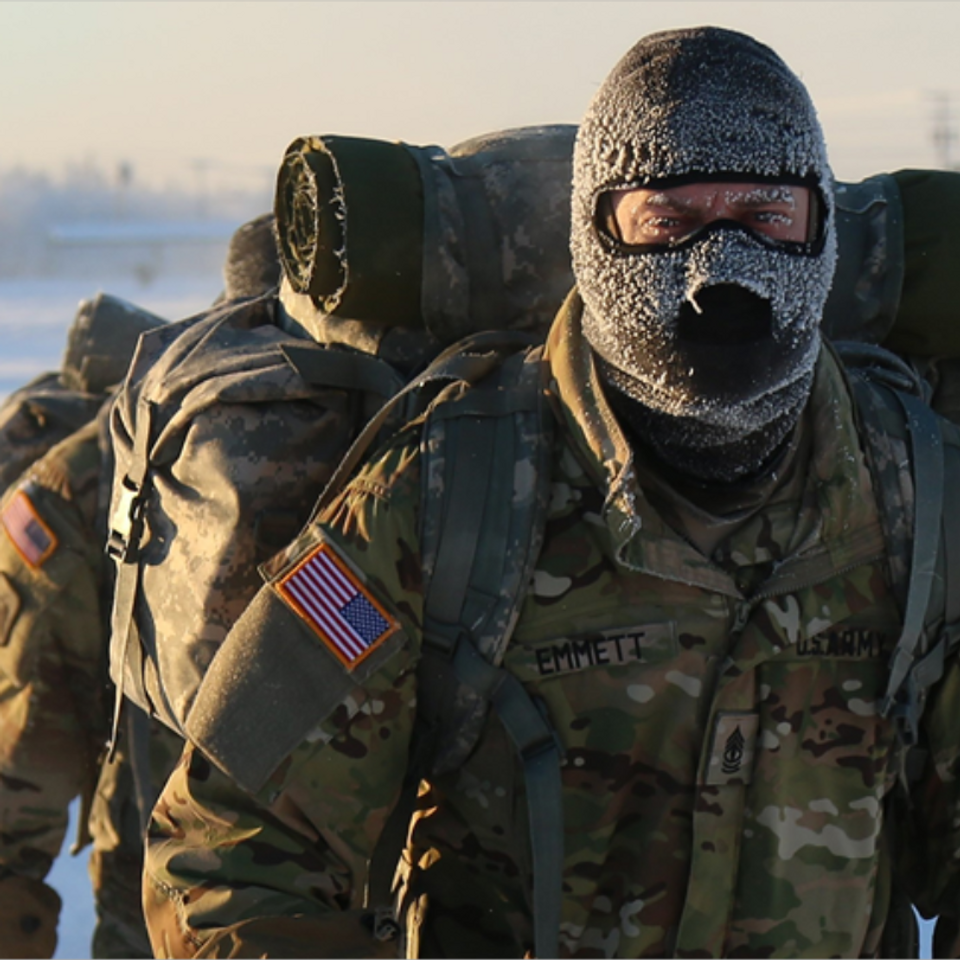Military ECWCS Thermals vs. Smartwool Thermals
Military ECWCS Thermals vs. Smartwool Thermals
In a cold-weather layering system, thermal base layers play a crucial role by wicking moisture away from the body. This keeps you dry and prevents heat loss due to evaporation. Since base layers are worn directly against the skin, their material and construction significantly impact your comfort. To illustrate this, we’ll compare two distinct base layers: the Military’s ECWCS thermals and Smartwool thermals.
Military ECWCS Thermals
Before facing harsh climates, soldiers are issued the Military’s Extended Cold Weather Clothing System (ECWCS). This system includes seven “levels” of clothing, which can be combined to ensure comfort in various weather conditions. The first two levels are base layer thermals:
- Level 1: This consists of a lightweight (silkweight) thermal top and bottom, designed for temperatures above freezing.
- Level 2: This mid-weight thermal top and bottom are intended for temperatures below freezing. They can be worn alone or combined with Level 1 for added insulation and moisture wicking.
See the selection of military thermals here.
Moisture Control:
Both Level 1 and Level 2 ECWCS thermals are made from a synthetic material called Polartec Power Dry. All synthetics have good wicking properties, but Polartec has been engineered specifically for wicking. It does a great job of pulling moisture so the base layers always feel dry against your skin, allowing you to feel warm.
Drying Time:
The Polartec material also dries very quickly. If you are going on a longer trip and plan on doing laundry, you only need to bring one extra pair of the Military thermals because they will dry overnight. You can even hang them off your pack to dry while hiking.
Durability:
Synthetic base layers are known for being very durable, but the Military’s thermals are built to take a beating. The material has a bi-component weave to give the material extra strength while still being lightweight and stretchy.
Flame Resistance:
The thermals meet the Military’s Flame Resistant Organizational Gear (FROG) requirements. FROG clothing was engineered to provide burn protection. Like all synthetic fabrics, the FROG thermals will get holes if a spark hits them. However, the material is “no melt, no drip” technology, protecting the wearer if they are exposed to a flame.
Odor Control:
Synthetic material base layers are notorious for starting to stink quickly. This is because smelly oils from our body stick to the synthetic materials. Bacteria also stick to the surface of synthetics. Odor-control isn’t one of the Military’s priorities, so their thermals are just as stinky as any other synthetic.
Features and Fit:
The Military thermals come in just a few color options, and there aren’t many sizes. Good luck finding Military thermals that fit a woman or a skinny teen boy well. You can also forget about designs or features.
Price:
The Military thermals are one of the most affordable base layer options you’ll find. They are often 5x cheaper than base layers marketed for skiing or hiking, and you can find them in military surplus stores. Army Navy Outdoors has surplus thermals as well as unused Military thermals.
Smartwool Thermals
Smartwool is a one of the best-known brands of wool thermals. Their products come in many different weights for different temperatures. They are very popular with skiers, hikers, and other outdoor enthusiasts.
Moisture Control:
All Smartwool thermals are made from merino wool, a material known for its natural moisture-wicking properties. Even though merino doesn’t wick nearly as well as synthetics, it feels drier on the skin. Merino also has great insulating properties, though a base layer’s primary function is to wick moisture away.
Drying Time:
While Smartwool thermals do wick moisture effectively, wool takes much longer to dry than synthetics. Wool does retain some of its insulating properties when wet, though a wet Smartwool thermal will not insulate as well as a dry one.
Durability:
Smartwool thermals are more durable than cheap merino wool base layers, but they still are delicate and need to be cared for. You should only hand wash them if you want them to last, and need to be careful that they don’t snag on branches or gear when wearing them by themselves.
Flame Resistance:
Merino wool is naturally flame-resistant to a degree. It will smolder and self-extinguish when exposed to flames, providing some level of protection but it is not as fire-resistant as the Military’s FROG thermals.
Odor Control:
One key feature of merino wool thermals is that it naturally inhibits bacterial growth. Long-distance hikers will often wear the same merino thermals for weeks without them getting stinky, meaning they don’t have to worry about washing or offending anyone they encounter.
Features and Fit:
Smartwool offers a huge range of fits, including options specifically tailored for different genders and body types. They also have thermals with additional features like flatlock seams to reduce chafing, thumbholes, and ventilation in key areas.
Price:
Smartwool thermals are notorious for being very expensive. They aren’t very durable either, so there is the added cost of having to buy another set sooner.
Which Is Better?
Both the Military ECWCS thermals and Smartwool thermals offer superior moisture-wicking to help your body stay warm in cold climates. If your primary concerns are durability and affordability, then the Military thermals are the better option. They are cheap and can take a beating. If you want more design options and are willing to pay more for a garment that doesn’t get stinky, then Smartwool is the way to go.











